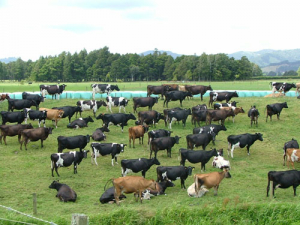Good effluent management is a combination of a well-designed effluent system and processes for people, says DairyNZ.
The processes for people ensure the effluent that the system collects is applied to pasture in the right quantity at the right time.
Onfarm benefits of good effluent management include fertiliser savings, improved soil condition, prevention of animal health issues and compliance with council rules or resource consent.
The key to good decisionmaking is understanding the soil water deficit. It is essential to prevent ponding and run-off and to avoid applying effluent to saturated soils.
Soil water deficit is the amount of water (effluent) which can be applied to the soil before it reaches field capacity (which refers to the amount of water held in the soil after excess water has drained away). If effluent is added at field capacity it will likely result in ponding, runoff or leaching.
The average dairy cow produces about $25 of nutrients annually as farm dairy effluent (FDE). For a 400 cow dairy herd this represents about $10,000 of nutrients annually. If these FDE nutrients are used effectively then this significantly reduces the fertiliser bill.
The DairyNZ Farm Dairy Effluent Spreading Calculator (app or Excel spreadsheet) allows farmers to easily calculate nutrient loadings and application rates for dairy effluent based on a number of customisable inputs. This means that farmers can manage the application of their effluent nutrients with greater precision.


















